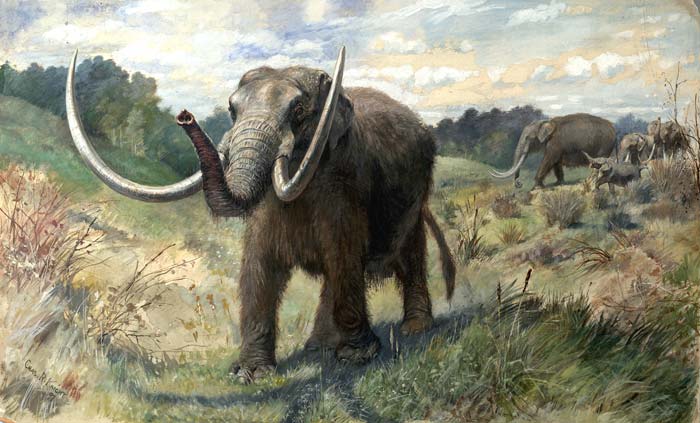- Series:Animals, Evolution’s Mistakes, Fossils, Transcript English
Joshua 24:15b
“But as for me and my house, we will serve the LORD.”
Mastodons were distant relatives of the elephant. Modern science says that one of the main parts of their diet was conifer needles. Supposedly, they died out at the end of the Ice Age because conifers became scarce as the world warmed.
 Now the discovery of the last meal of one mastodon calls this theory into question. Living bacteria have been found in a mastodon that died during the Ice Age. The bugs were found in the remains of a mastodon’s last meal, preserved with a skeleton that was discovered while preparing a golf course in Ohio. Scientists think the bacteria normally lived inside the mastodon, working as part of the mastodon’s digestive process.
Now the discovery of the last meal of one mastodon calls this theory into question. Living bacteria have been found in a mastodon that died during the Ice Age. The bugs were found in the remains of a mastodon’s last meal, preserved with a skeleton that was discovered while preparing a golf course in Ohio. Scientists think the bacteria normally lived inside the mastodon, working as part of the mastodon’s digestive process.
What scientists discovered about the mastodon’s diet could upset some theories about what drove them to extinction. The scientists said the four-ton mastodon had spent its last day eating a salad of swamp grass, moss and leaves, a bit of seed and a garnish of water lily. What was left of these plants, as well as the bacteria, were separated from a mass of reddish-brown matter found near the mastodon’s ribs and vertebrae.
Scientists who believe in evolution claim that the animal died 11,000 years ago. But how sure can we be about that? After all, evolutionary scientists were wrong about the mastodon’s diet. As a result, their theories about why mastodons became extinct seem to be wrong. The facts that the bacteria were still alive and the stomach contents were not fully decayed tells us that this evolutionary date, too, is greatly exaggerated.
Prayer:
Lord, so many people prefer to reject Your Word and then do their own speculating about things You have clearly revealed to us. I ask that through Your Holy Spirit, You would help me not to speculate where Your Word has spoken so clearly. Amen.
Notes:
